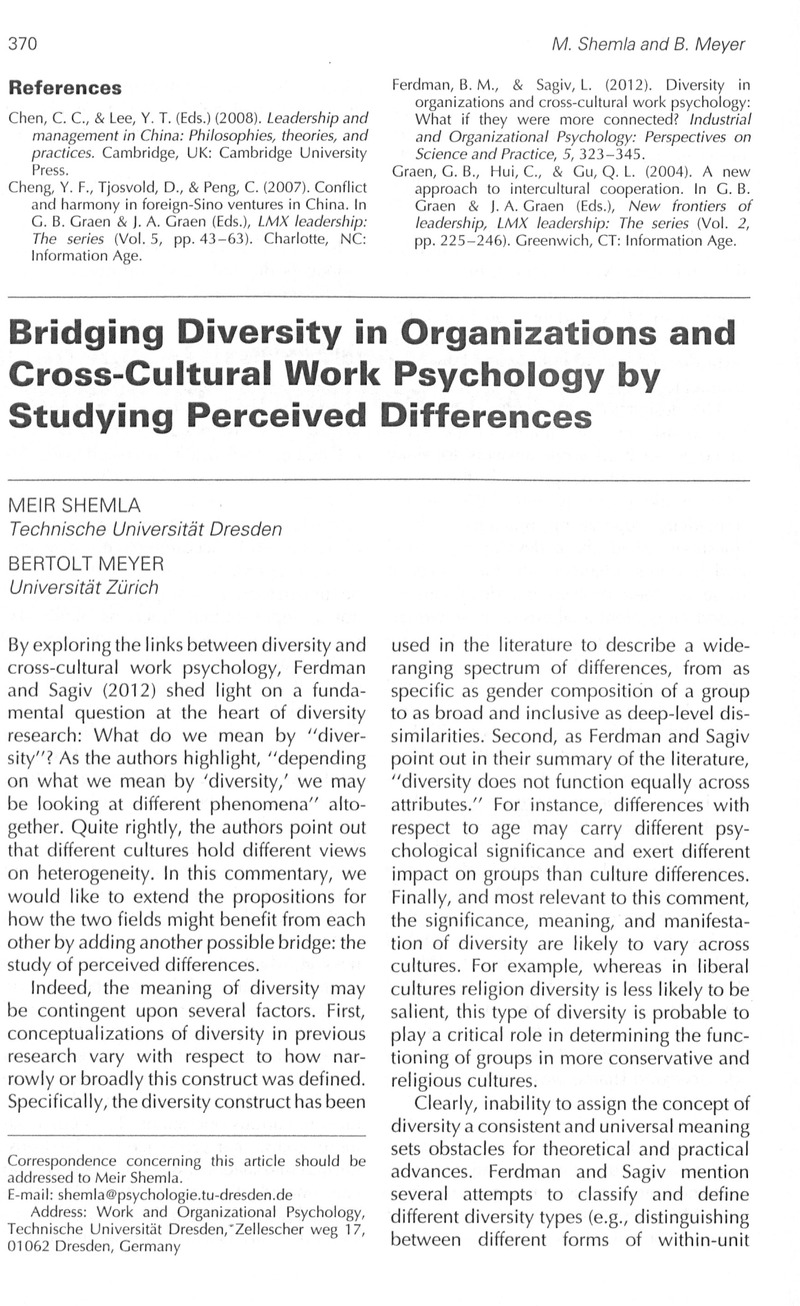Crossref Citations
This article has been cited by the following publications. This list is generated based on data provided by Crossref.
Ferdman, Bernardo M.
and
Sagiv, Lilach
2012.
The Value of Connecting Diversity in Organizations and Cross-Cultural Work Psychology Through Dialogue and Multiplicity.
Industrial and Organizational Psychology,
Vol. 5,
Issue. 3,
p.
373.
Shemla, Meir
Meyer, Bertolt
Greer, Lindred
and
Jehn, Karen A.
2016.
A review of perceived diversity in teams: Does how members perceive their team's composition affect team processes and outcomes?.
Journal of Organizational Behavior,
Vol. 37,
Issue. S1,
Gerpott, Fabiola H.
Lehmann-Willenbrock, Nale
and
Voelpel, Sven C.
2017.
A Phase Model of Intergenerational Learning in Organizations.
Academy of Management Learning & Education,
Vol. 16,
Issue. 2,
p.
193.
Gerlach, Rebecca
and
Gockel, Christine
2018.
We belong together: belonging to the principal’s in-group protects teachers from the negative effects of task conflict on psychological safety.
School Leadership & Management,
Vol. 38,
Issue. 3,
p.
302.
Creon, Laura Elisabeth
and
Schermuly, Carsten Christoph
2019.
Training group diversity and training transfer: A psychological safety perspective.
Human Resource Development Quarterly,
Vol. 30,
Issue. 4,
p.
583.
Chatman, Jennifer A.
Greer, Lindred L.
Sherman, Eliot
and
Doerr, Bernadette
2019.
Blurred Lines: How the Collectivism Norm Operates Through Perceived Group Diversity to Boost or Harm Group Performance in Himalayan Mountain Climbing.
Organization Science,
Vol. 30,
Issue. 2,
p.
235.
David, Emily M.
Avery, Derek R.
Witt, L. Alan
Tonidandel, Scott
McKay, Patrick F.
Brown, Lindsay
and
Crepeau, Loring
2019.
Helping Misfits to Commit: How Justice Climate Attenuates the Effects of Personality Dissimilarity on Organizational Commitment.
Journal of Business and Psychology,
Vol. 34,
Issue. 4,
p.
503.
Shemla, Meir
and
Wegge, Jürgen
2019.
Managing diverse teams by enhancing team identification: The mediating role of perceived diversity.
Human Relations,
Vol. 72,
Issue. 4,
p.
755.
Dongrey, Ritika
and
Rokade, Varsha
2021.
Assessing the Effect of Perceived Diversity Practices and Psychological Safety on Contextual Performance for Sustainable Workplace.
Sustainability,
Vol. 13,
Issue. 21,
p.
11653.
op ‘t Roodt, Helen
Krug, Henning
and
Otto, Kathleen
2021.
Subgroup Formation in Diverse Virtual Teams: The Moderating Role of Identity Leadership.
Frontiers in Psychology,
Vol. 12,
Issue. ,
Gerpott, Fabiola H.
Lehmann-Willenbrock, Nale
Wenzel, Ramon
and
Voelpel, Sven C.
2021.
Age diversity and learning outcomes in organizational training groups: the role of knowledge sharing and psychological safety.
The International Journal of Human Resource Management,
Vol. 32,
Issue. 18,
p.
3777.
Jaffé, Mariela E.
Jeitziner, Loris
Keller, Matthias D.
and
Walker, Mirella
2022.
Differences in faces do make a difference: Diversity perceptions and preferences in faces.
Journal of Experimental Social Psychology,
Vol. 100,
Issue. ,
p.
104277.





